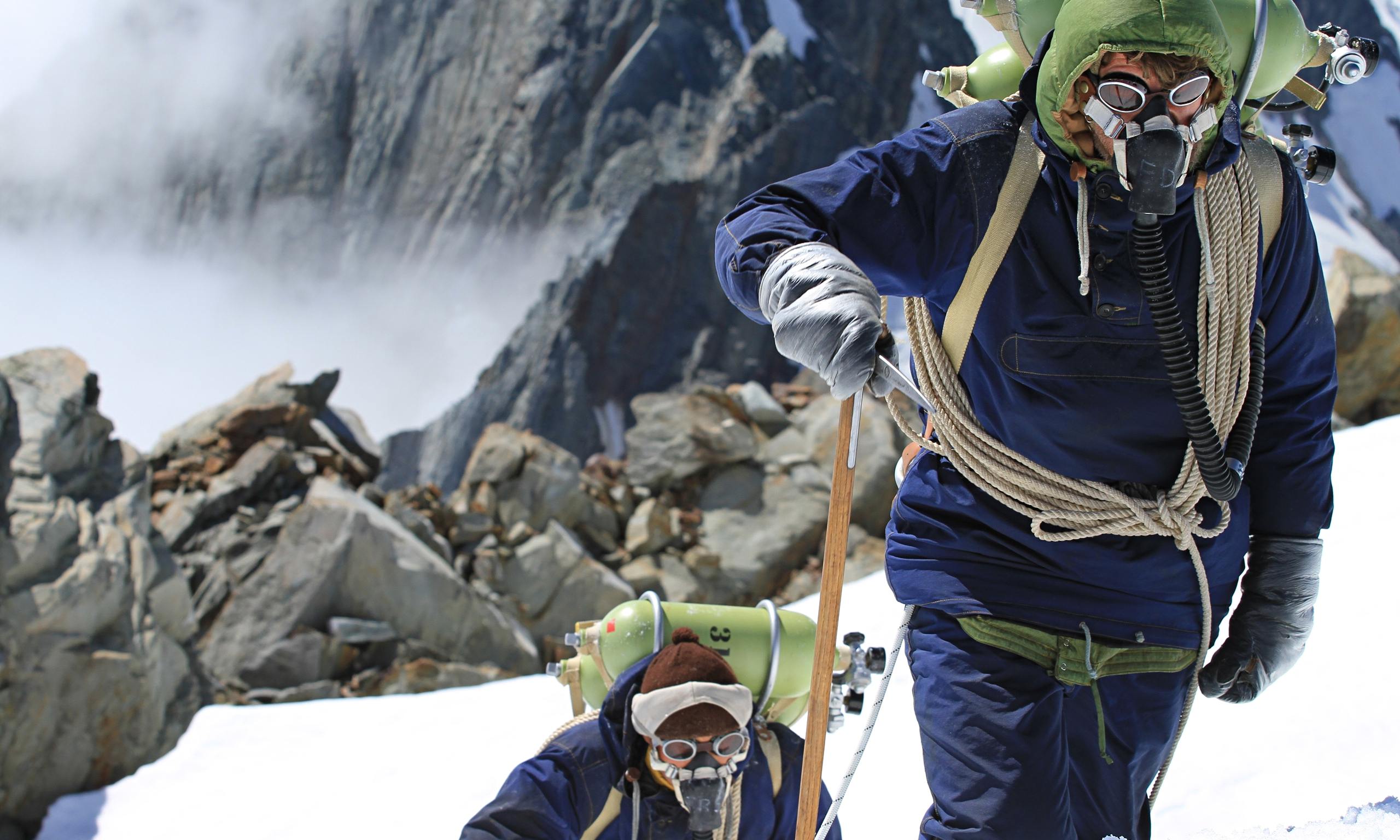The bigger the camera, the bigger your subject should be. One reason Titanic worked so well, back in ’97, was James Cameron’s decision to film the shipwreck in widescreen. He also had an array of digital tools, plus a nation full of huge multiplex screens and stadium seating—none of which A Night to Remember, shot 40 years before on smaller aspect ratio, had enjoyed. And only two years ago, Cameron reissued his film in 3-D IMAX format. Size sells.
Mount Everest represents the same massive attraction to filmmakers. There was the IMAX Everest doc in ’98, with local climber Ed Viesturs among those on the ascent; and four years ago the doomed English expedition of 1924 also went the IMAX route in The Wildest Dream. So what’s left to film? The first successful Everest expedition, which placed Edmund Hillary and Tenzing Norgay on the summit in 1953. As with the Titanic, this is hardly an obscure historical episode. The English effort was well photographed and documented in newsreels, and New Zealand filmmakers Matthew Metcalfe and Leanne Pooley make good use of those source materials here. But this can’t just be a grainy black-and-white archival job for the History Channel, so they’ve gone the 3-D route for the new footage and, groan, reenactment scenes—always a questionable practice.
Beyond the Edge is mainly intended as a tribute to the tall, modest former beekeeper that was Hillary; and it succeeds that far. But we mustn’t ignore the plucky, determined Norgay, so he’s valorized, too. Everyone’s brave, everyone’s admirable, and everything ends well for the expedition. Again, it’s hard to spin much drama out of such a renowned, successful endeavor. Experts and even Mallory’s son hint at his class anxieties, but this just seems a cheap overlay of modern neurosis, an unsupportable gimmick. Is there something so wrong about having a psychologically normal and well-adjusted hero?
To its credit, the 3-D aerial vistas of Everest look great in Beyond the Edge, though most of it was actually shot near Mt. Cook in the Southern Alps of New Zealand. (Like the LOTR movies, this is a postcard-perfect invitation to visit that country.) This familiar story isn’t entirely dull, and local alpinists will chuckle at some of the historical details, like expedition leader John Hunt pecking away on a typewriter in his tent, high up at base camp. And today we complain there’s too much technology on the mountain.
Opens Fri., July 11 at Sundance Cinemas. Not rated. 90 minutes.
bmiller@seattleweekly.com








